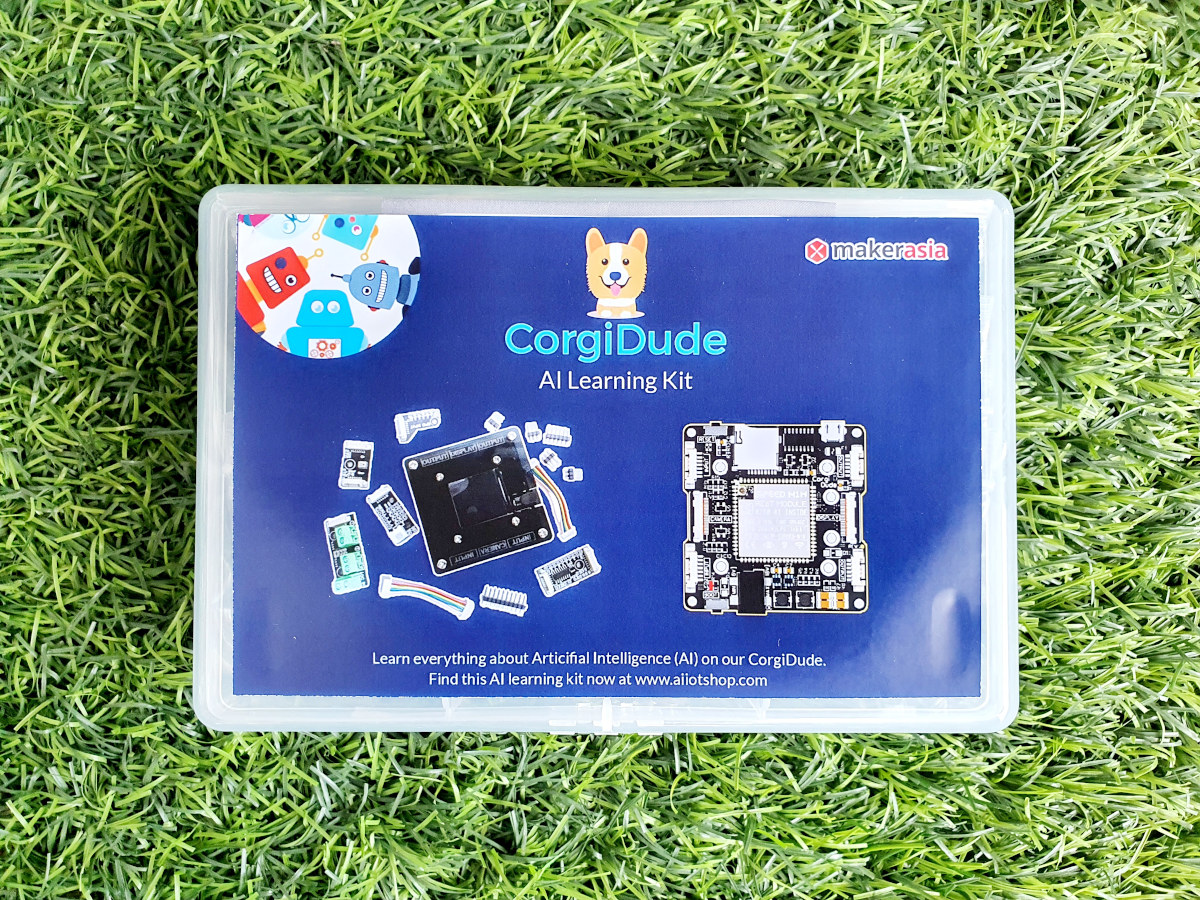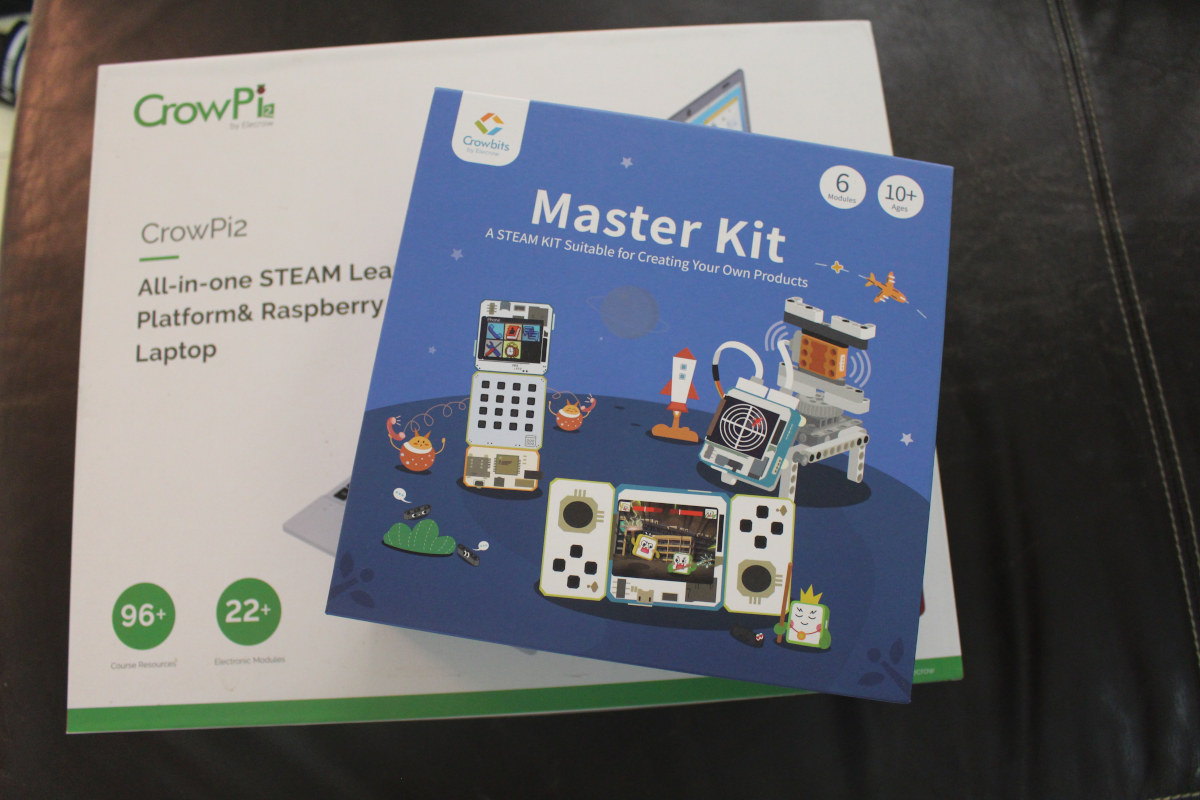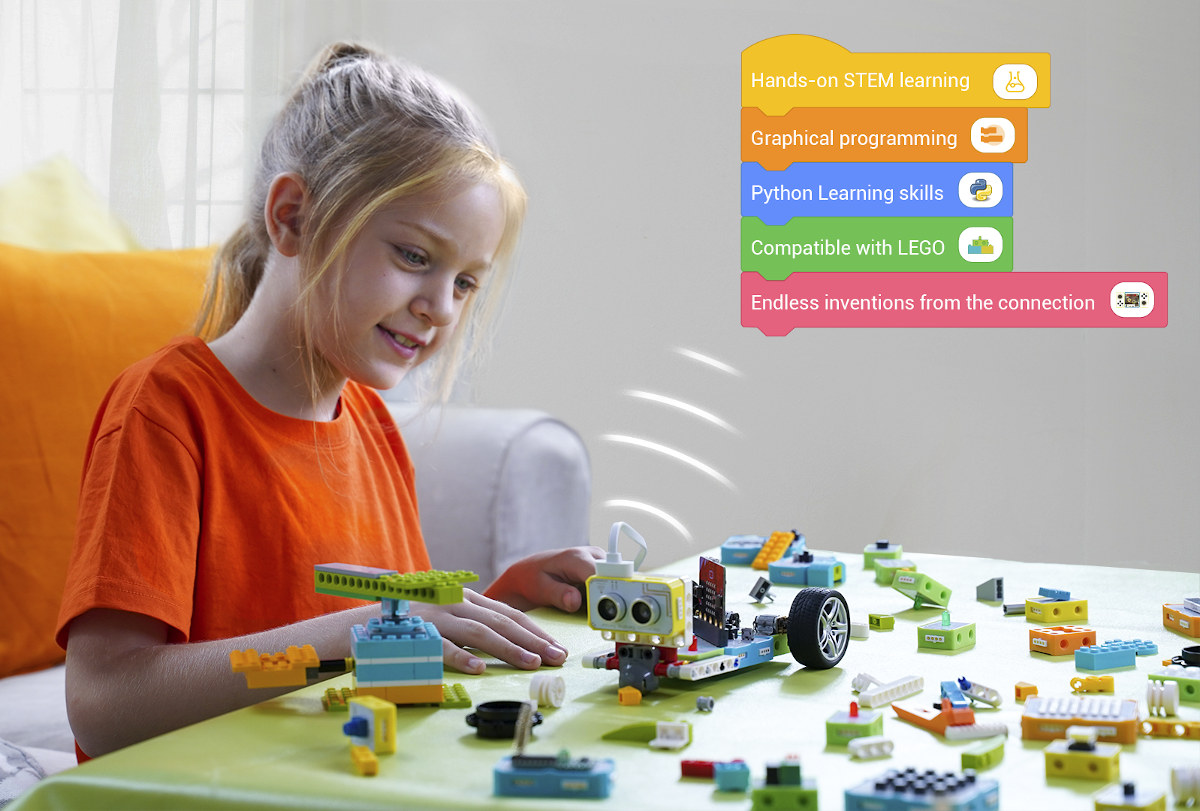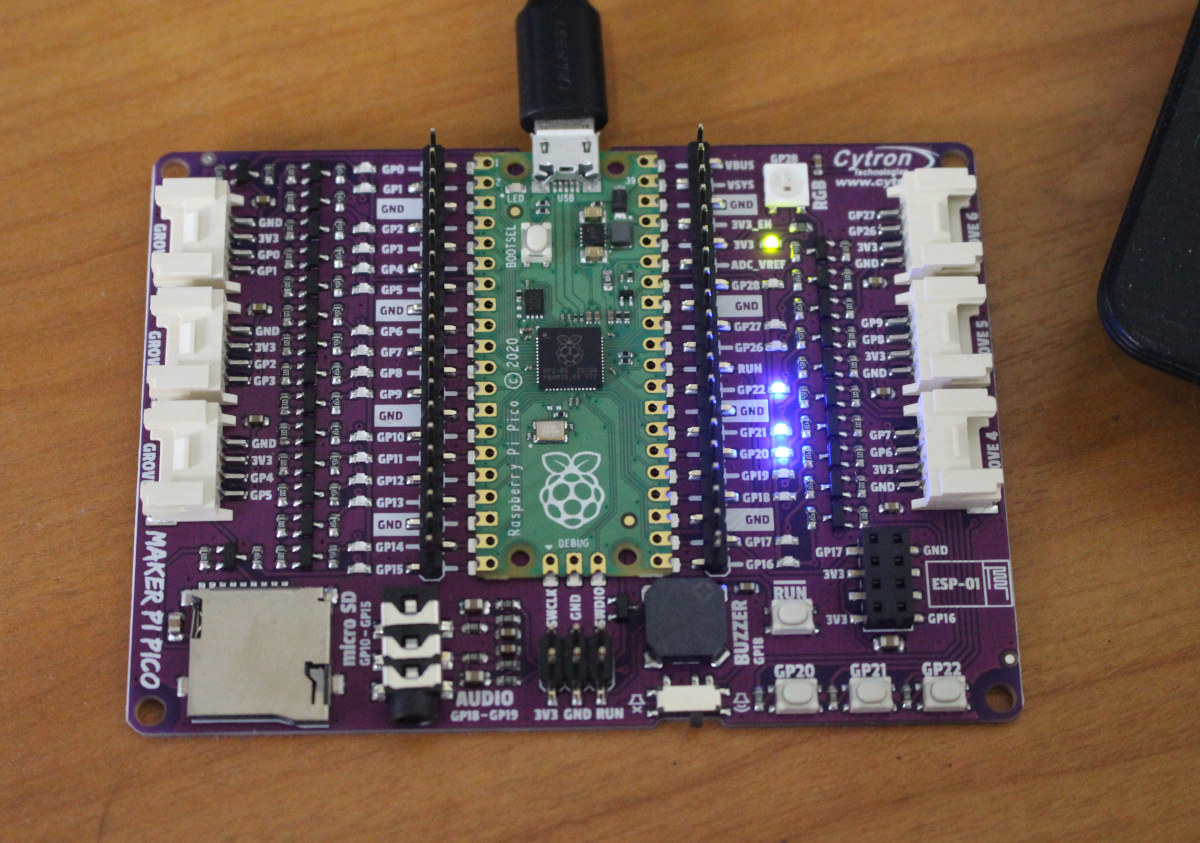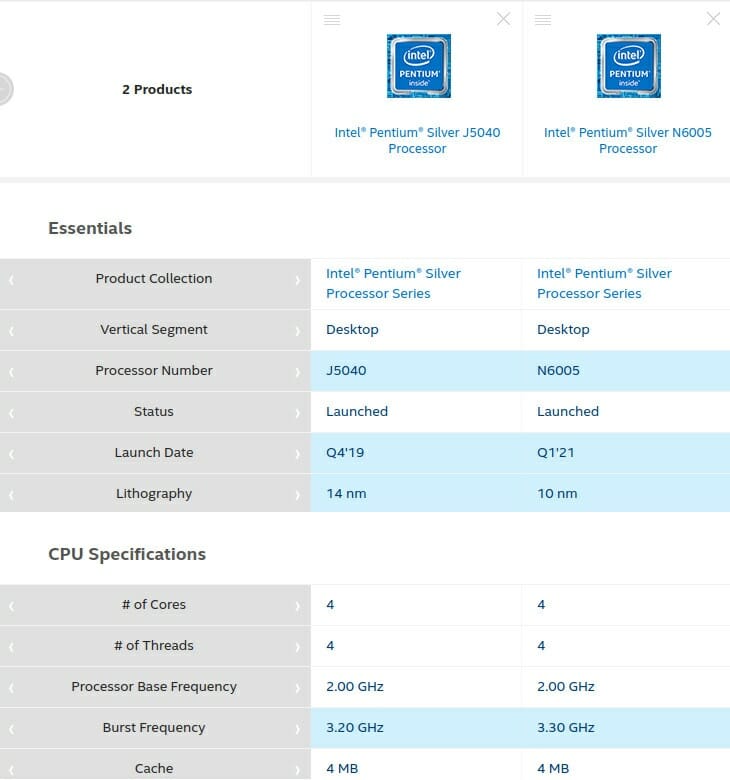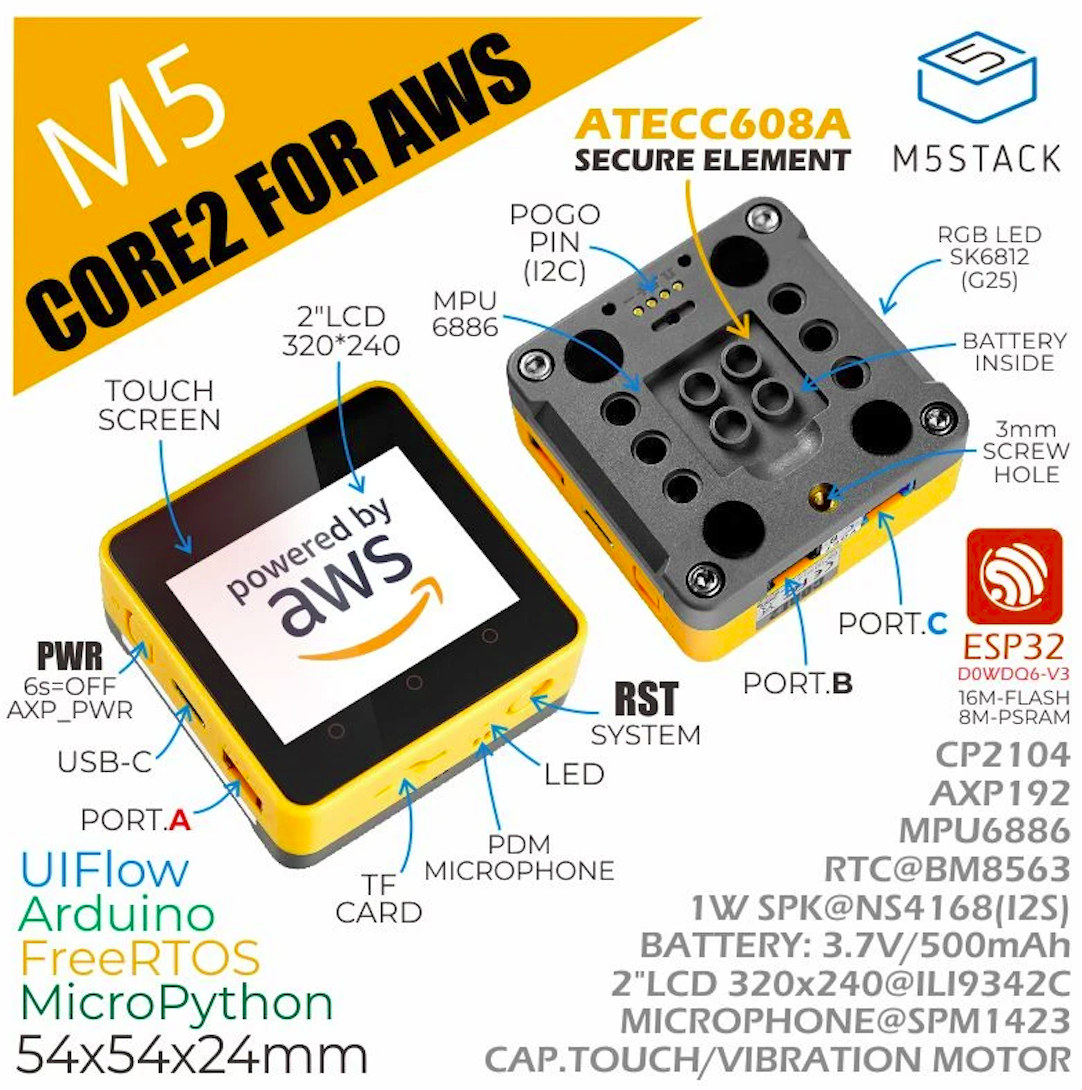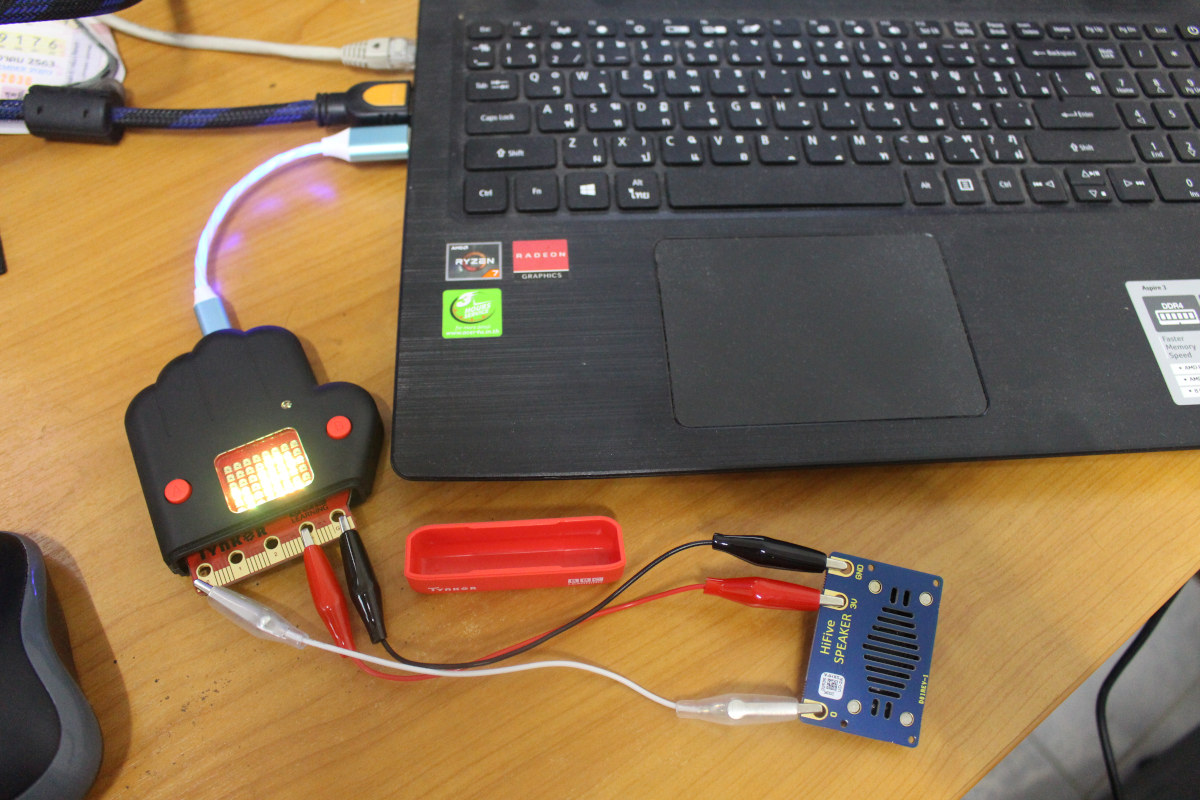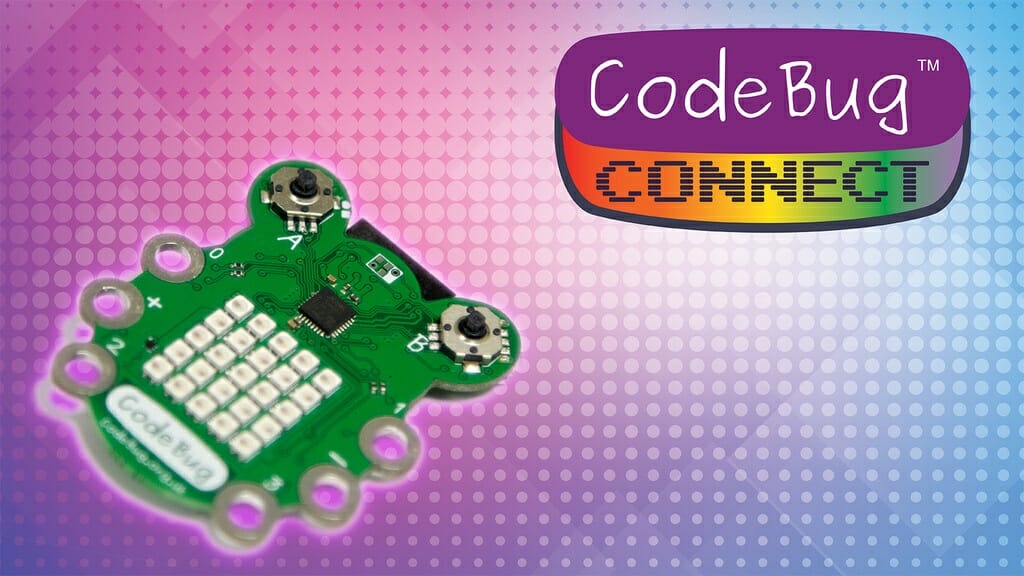There’s a relatively small but active maker community in Thailand, and we’ve covered or even reviewed some made in Thailand boards including ESP8266 and ESP32 boards, a 3G Raspberry Pi HAT, and KidBright education platform among others. MakerAsia has developed CorgiDude, a board based on the version of Sipeed M1 RISC-V AI module with built-in WiFi, and part as a kit with a camera and a display used to teach machine learning and artificial intelligence with MicroPython or C/C++ programming. CorgiDude board specifications: AI Wireless Module – Sipeed M1W Module with Kendryte K210 dual-core 64-bit RISC-V RV64IMAFDC CPU @ 400Mhz with FPU, various AI accelerators (KPU, FFT accelerator…), 8MiB on-chip SRAM Espressif ESP8285 single-core 2.4 GHz WiFi 4 SoC plus IPEX antenna connector Storage – MicroSD card slot Camera I/F for 2MP OV2640 sensor up to 1280 × 1024 (SXGA) @ 30 fosm SVGA @ 30 fps, or CIF @ […]
Crowbits Master Kit Review – Part 1: A first look at the ESP32 based education kit
Crowbits STEM education kits comprised of magnetic modules launched on Kickstarter a couple of weeks ago. There are five kits increasing in difficulty with the Hello Kit just requiring the student to connect modules to get started, i.e. no programming required, to the Crowbits Master Kit based on a battery-powered ESP32 module suitable to create your own phone, portable game console, radar tower, etc… Elecrow sent me the latter for evaluation, and in the first part of the review, I’ll unbox the kit, see how modules mechanically fit together, and have a quick look at the user manual, before trying one or two projects from the manual in the second part. This is the second STEAM product from Elecrow that I review, as I reviewed CrowPi2 Raspberry Pi 4 laptop last year. Let’s open the package. We have a total of six modules with two joysticks, an ESP32 module with […]
Crowbits magnetic blocks for STEM Education work with Arduino, Micro:bit, ESP32, and Raspberry Pi (Crowdfunding)
Elecrow develops and manufactures electronics products for the maker market, and in recent years entered the STEM education market with products such as CrowPi2 Raspberry Pi 4 education laptop that I reviewed last year. The laptop integrates plenty of electronics modules, and students can learn Scratch visual programming as well as Python programming with the educational software running on the laptop. The company has now launched Crowbits magnetic electronic blocks for STEM education, and compatible with Arduino, ESP32, Raspberry Pi, and Micro:bit boards. There are over 80 programmable electronic magnetic modules and Lego bricks, with three different sizes ( large, middle, and small modules) of different colors with blue used for power control and logic control, green for output, yellow for input, and orange for advanced programming. Out of the 80+ modules, around 30 can be used without programming at all. Elecrow provides 5 kits to let users learn basic […]
Maker Pi Pico STEM board mini review with CircuitPython
In my early list of third-party Raspberry Pi RP2040 boards, I shortly mentioned Cytron Maker Pi Pico baseboard for Raspberry Pi Pico that exposes all pins via female headers, includes LEDs for all GPIOs pin, six Grove connectors, three user push-buttons, one RGB LED, a piezo buzzer, an audio jack, a MicroSD card, and an ESP-01 socket to add WiFi connectivity. The beta version sold for $5, and at the time I missed that included Raspberry Pi Pico board as well, so basically you got a free baseboard. The Malaysian company has now sent me a review sample to play around with, so let’s have a closer at the hardware and code samples for the board. Maker Pi Pico Unboxing and Specifications I received the board in Cytron package together with a pinout diagram for Raspberry Pi Pico, and we can see the latter is already soldered to Maker Pi […]
Intel Jasper Lake N-Series launched with 6W Celeron and 10W Pentium Silver processors
Intel has finally announced the Gemini Lake processor family successor at CES 2021 together with other processors. The Jasper Lake family currently comes with six different Celeron and Pentium Silver parts with respectively 6W and 10 TDP. The company positions those for the education market, but I’d expect them to also be found in various mini PCs, single board computers, and systems-on-module. The processors are manufactured with the company’s 10nm process, and are said to deliver up to 35% better overall application performance and up to 78% better graphics performance compared to Gemini Lake Refresh processors. The new parts listed on Ark are not really new for CNX Software readers as we published the list of Jasper Lake processors in September following a leak. But we know have more details, so let’s compare the top parts of both Gemini Lake Refresh (Pentium Silver J5040) and Jasper Lake (Pentium Silver N6005) […]
AWS IoT EduKit leverages M5Stack Core2 ESP32 hardware
M5Stack Core2 is a neatly packed ESP32 IoT development kit with a 2-inch touchscreen display, motion sensor, a microphone., and a built-in battery that was launched last September. The hardware has been selected by Amazon Web Services and gone through some small modifications including the addition of a secure element, and a yellow paint job giving birth the the “AWS IoT EduKit” hardware and software solution designed to “learn how to build IoT applications using AWS services through a prescriptive learning program”. M5Stack Core2 for AWS IoT EduKit specifications are pretty similar, but with a few tweaks here and there: SoC – Espressif ESP32-D0WDQ6-V3 dual-core Xtensa LX6 processor clocked at up to 240MHz with 520KB SRAM, Wi-Fi, and dual-mode Bluetooth connectivity External Memory – 8MB PSRAM Storage – 16MB flash storage, MicroSD card slot up to 16GB Display – 2-inch IPS LCD screen with 320×240 resolution (ILI9342C driver), and touchscreen […]
BBC Dr Who HiFive Inventor Coding Kit review – Tynker visual programing and MicroPython
The BBC Doctor Who HiFive Inventor Coding Kit was announced at the end of November 2020 with the goal of teaching IoT to young kids. But one day, I noticed the postman left a package on the ground right next to my house’s gate for some reason. I had no idea what it could be until I read it was from SiFive on the package. So here I am about to review BBC Doctor Who HiFive Inventor Coding Kit! The package actually included two small packages with one being an “expansion board”… HiFive Inventor Coding Kit Unboxing We’ve already written about the specs in the announcement post, but here they are again for those who forgot it’s based on SiFive FE310 RISC-V microcontroller and ESP32 for WiFi and Bluetooth. Let’s open the thinner “expansion board” package first. It’s actually the HiFive Inventor board – aka the mainboard – that comes […]
CodeBug Connect IoT development board is designed for young makers (Crowdfunding)
In 2015, a UK-based team launched a mini IoT development board called CodeBug. The same team has now come up with the CodeBug Connect IoT Development Board. CodeBug Connect is a new wearable micro-computer that brings IoT to everyone and aimed at educators and young makers. Upgrade to the original CodeBug This comes as an upgrade to the original CodeBug. The new development board retains its original cuteness and petite proportions but adds full color to the grid of 5×5 LEDs. The original buttons have been upgraded to mini joysticks, making them more suitable for games. The touch-sensitive, croc-clip connectors ‘legs’ that serve as I/O pins remain, as does the 0.1” header socket. “This year has shown our reliance on connected technology — with CodeBug Connect we wanted to make this technology accessible so everyone can build their own IoT devices and no one is left behind. The technology in […]


